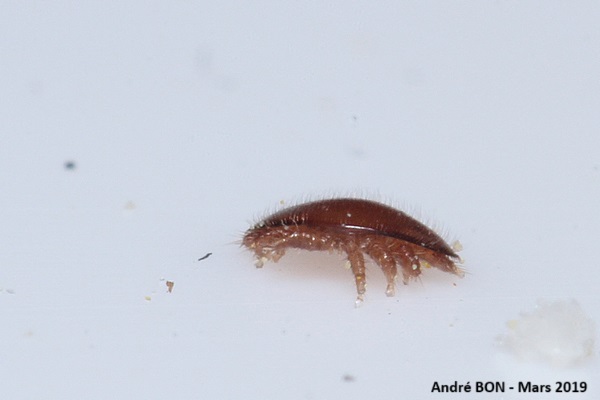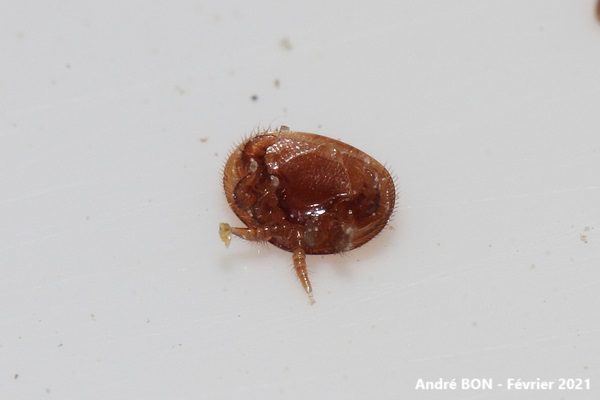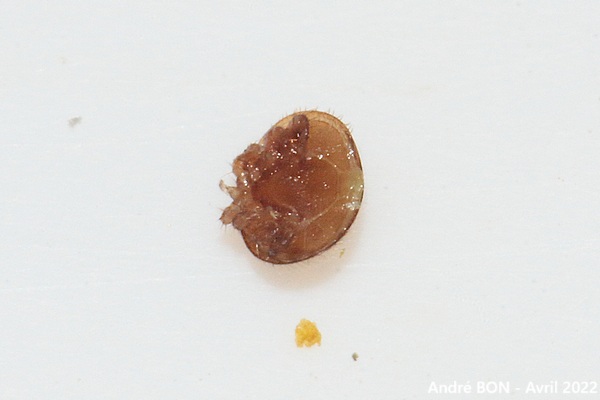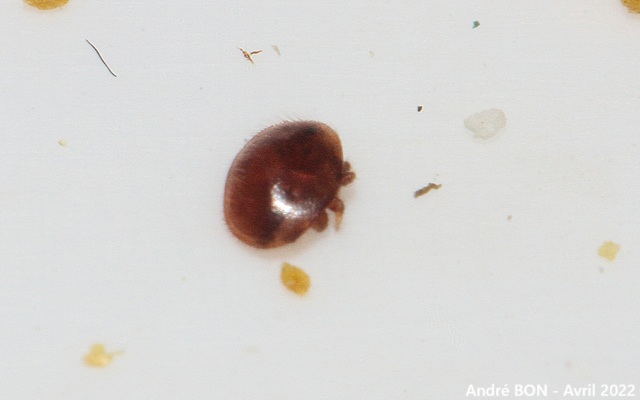



| Varroa destructor (Anderson & Trueman, 2000) |




|
|
Scientific name: Varroa destructor (Anderson & Trueman, 2000) Common name: French name: Varroa destructeur Order: Mesostigmata Family: Varroidae Size: Females: 1 to 1.8 mm long and 1.5 to 2 mm wide; males: 0.8 mm in diameter. Biotope: The Varroa destructor lives as a parasite of Asian honeybees (Apis cerana) and European honeybees (Apis mellifera), and is therefore found within these bee colonies. Web: No web. Observation period: All year round. Geographic area: The Varroa destructor has spread across the planet since the 1960s as a parasite of Apis mellifera. Some areas that were spared, such as Australia or the island of Ouessant, have ended up being colonized recently. |
Female Varroa destructor have flattened bodies, covered with numerous bristles and reddish-brown in colour. This flattened shape allows them to enter the cells of the bee brood between the larva and the edge of the cell. Their legs have suction cups at the tip to allow them to cling to adult bees which they parasitize by feeding on the fatty tissue. Males are yellowish-white and are only found in brood cells. Females lay eggs in the closed brood to produce adults in 7 to 9 days for females and 5 to 7 days for males. Males fertilize the females and die when the bee emerges. Females can then attach to bees or reparasitize brood. Without any particular action, the number of Varroa destructor in a colony can double in a month. The proliferation of Varroa can cause a disease called varroosis which leads to the weakening and death of the colony. |
| [To know more about the Varroa destructor] [Next picture] [Top] |

|
I am an amateur beekeeper and managing the apiary requires assessing the level of infestation of the colonies. One method for this is to place a tray under the frames to count the number of natural Varroa mite falls over 24 hours. This photo was shot on the tray. For information I usually find less than 10 natural falls per colony in 24 hours. When I treat with an acaricide the number of falls exceeds 100 per 24 hours and the treatment is left for more than 4 weeks. |
| [To know more about the Varroa destructor] [Next picture] [Previous picture] [Top] |

|
Here is a Varroa mite that fell on the tray and is still moving, so it is not dead like those that usually fall. Here is a view of the ventral side, however the magnification (significant cropping) and lighting are not optimized for such a small subject. |
| [To know more about the Varroa destructor] [Next picture] [Previous picture] [Top] |

|
Here's another ventral view. It would definitely be worth photographing through high-power binoculars for a more detailed view. |
| [To know more about the Varroa destructor] [Previous picture] [Top] |

|
Dorsal view. |